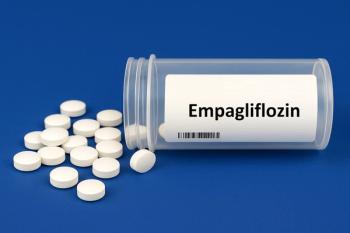
- Drug Topics September 2022
- Volume 166
- Issue 9
FDA Approves Voquezna for Helicobacter pylori Infection in Adults
This new treatment option copackages 3 drugs for optimal treatment.
The FDA recently approved 2 novel, copackaged drug products–– vonoprazan, amoxicillin, and clarithromycin (ACV; Voquezna Triple Pak) and vonoprazan and amoxicillin (Voquezna Dual Pak)––for the treatment of Helicobacter pylori infection in adults.1
The newly approved drug comprises amoxicillin, a penicillin-class antibacterial; clarithromycin, a macrolide antimicrobial; and vonoprazan, a potassium-competitive acid blocker (PCAB). Although amoxicillin inhibits bacterial wall synthesis, it is unable to eradicate H pylori infection alone. This warrants the addition of clarithromycin, whose mechanism of action is inhibiting bacterial protein synthesis. Although clarithromycin does have activity against these bacteria, its use without other antibiotics promotes resistance, and the drug is therefore not used by itself. Finally, the PCAB vonoprazan is added to the regimen for its potent acid-inhibiting effects, as H pylori colonizes and flourishes in a low pH, high acidic environment.2,3
Efficacy
Through the PHALCON-HP clinical trial (NCT04167670),4 investigators demonstrated the safety and efficacy of vonoprazan in combination with amoxicillin and clarithromycin (vonoprazan triple therapy) and vonoprazan in combination with amoxicillin (vonoprazan dual therapy) vs lansoprazole in combination with amoxicillin and clarithromycin (lansoprazole triple therapy). This randomized, multicenter, phase 3 trial initially enrolled 1046 patients; 992 patients with confirmed H pylori infection were later randomly assigned into 1 of 3 treatment arms (n = 324, 338, and 330, respectively). The primary end point, infection eradication rate by vonoprazan-containing regimens, was found to be noninferior compared with the lansoprazole triple therapy arm. Investigators used a modified intention-to-treat population and reported H pylori eradication rates of 84.7% and 78.5% with vonoprazan triple and dual therapy, respectively, vs 78.8% with lansoprazole triple therapy (P < .0001 and P = .0037, respectively, for noninferiority).
Safety
ACV is considered a strong CYP3A4 inhibitor due to the inclusion of clarithromycin.5 Concomitant use with CYP3A4 substrates may cause elevated concentrations, particularly of concern with rilpivirine-containing products, simvastatin, lovastatin, and colchicine.
Additional warnings and adverse effects are predominantly related to amoxicillin and clarithromycin,5 including gastrointestinal distress, prolongation of the QT interval, and hepatic dysfunction. Use of ACV triple therapy should be avoided in patients with risk factors for macrolide resistance (prior exposure, local clarithromycin resistance rates ≥ 15%, eradication rates with clarithromycin-based regimens ≤ 85%).
Dosing
ACV dosing consists of amoxicillin 1 g, clarithromycin 500 mg, and vonoprazan 20 mg administered together orally twice daily for 14 days.5 Alternatively, ACV is available copackaged with only amoxicillin 1 g three times daily plus vonoprazan 20 mg twice daily for 14 days without the clarithromycin component for use with macrolide-resistant or allergic individuals.5
References
- Phathom Pharmaceuticals announces FDA approval of Voquezna Triple Pak (vonoprazan, amoxicillin, clarithromycin) and Voquezna Dual Pak (vonoprazan, amoxicillin) for the treatment of H pylori infection in adults. News release. Phathom Pharmaceuticals. May 3, 2022. Accessed August 16, 2022.
https://www.globenewswire.com/news-release/2022/05/03/2435147/0/en/Phathom-Pharmaceuticals-Announces-FDA-Approval-of-VOQUEZNA-TRIPLE-PAK-vonoprazan-amoxicillin-clarithromycin-and-VOQUEZNA-DUAL-PAK-vonoprazan-amoxicillin-for-the-Treatment-of-H-pylo.html - Chey WD, Leontiadis GI, Howden CW, Moss SF. ACG Clinical Guideline: Treatment of Helicobacter pylori Infection. Am J Gastroenterol. 2017;112(2):212-239. Published correction appears in Am J Gastroenterol. 2018;113(7):1102.
- Chey WD, Mégraud F, Laine L, López LJ, Hunt BJ, Howden CW. Vonoprazan triple and dual therapy for Helicobacter pylori infection in the United States and Europe: randomized clinical trial. Gastroenterology. Published online June 6, 2022. doi:10.1053/j.gastro.2022.05.055
- Efficacy and safety of vonoprazan compared to lansoprazole in participants with Helicobacter pylori infection. ClinicalTrials.gov. Updated April 5, 2022. Accessed August 16, 2022. https://clinicaltrials.gov/ct2/show/NCT04167670
- Voquezna Triple Pak and Voquezna Dual Pak. Prescribing information. Phathom Pharmaceuticals, Inc;2022.
Articles in this issue
over 3 years ago
Tips for Managing Diabetes Comorbiditiesover 3 years ago
The Evolution of the CBD Regulatory Landscapeover 3 years ago
Women and CBD: Increased Interest, but Caution Is Warrantedover 3 years ago
Mitigating Costs of Cancer Treatment: The Role of Pharmacistsover 3 years ago
Counseling Pearls for CBDover 3 years ago
Drug Testing Challenges Emerge With CBD Product Useover 3 years ago
Waste Problem Shows COVID-19 Vaccines Aren’t Just a Dime a Dozenover 3 years ago
CBD Products: What Pharmacists Need to KnowNewsletter
Pharmacy practice is always changing. Stay ahead of the curve with the Drug Topics newsletter and get the latest drug information, industry trends, and patient care tips.


















































































































